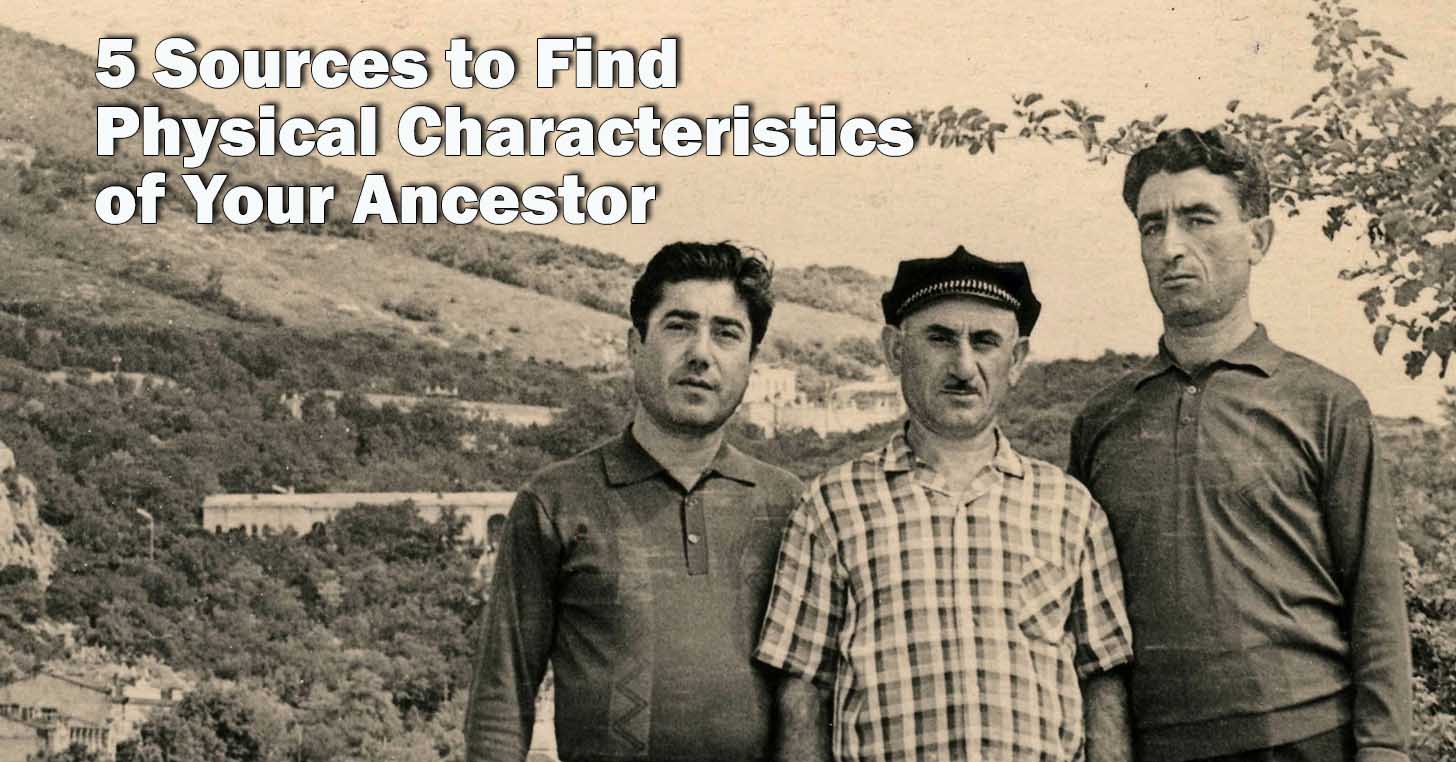
As we research our ancestors in historical records, we start to get to know them. As researchers, we learn about their wealth (or lack thereof), the type of land they owned, and their military service. We can learn about their religion and possibly even the contents of their household.
But do you ever wonder what your ancestors looked like?
How tall was your great grandfather? Which side of the family did you get your blues eyes from? What color hair did your ancestor have? Did you ancestors have any physical deformities?
Even if you have no photographs of your ancestors, you can find descriptions of their physical characteristics.
Let’s take look at 5 sources for finding a description of an ancestor’s physical characteristics and potentially a photograph.
1. Draft Cards – A man’s physical characteristics were listed on WWI and WWII draft cards. Height, weight (slight, medium or stout), hair color, and eye color were recorded. Race was also included. If your ancestor had a physical deformity, that was listed as well.
This example shows that Connie M. Howard of Lee County, NC was of medium height and medium build with brown eyes and black hair. No physical deformities are noted.
2. Civilian Conservation Corps Records – Part of the New Deal by President Roosevelt, the Civilian Conservation Corps (CCC) was a public relief corps dating from 1933-1942. The CCC program was specifically for unmarried and unemployed men. Roads, parks and improvement to other federal lands and natural resources were built by the CCC.
A young man’s height, weight, eye color, hair color, complexion, and physical deformities were included on their admission and discharge papers.
3. Jail Records– Was your ancestor on the wrong side of the law? Admission records into a jail or prison likely will include a description of the inmate which can be very descriptive. In addition to the usual height, weight, eye and hair color, and complexion, descriptions of scars and tattoos are frequently included.
Take a look at the detailed physical description of 1866 Sing Sing Prison inmate Charles Miller. Beyond the basics, we have a clear description of his scars and even how his mouth inclines to the left.
4. Passport Applications – Your ancestor’s passport application is another potential source to learn about your ancestor’s physical characteristics. Similar to the records above, passport applications asked for height, weight, eye and hair color, complexion and more.
As a bonus, you may find a photograph of your ancestor attached to the application.
5. Yearbooks – High school and college yearbooks are another source for finding what your ancestor looked like by actually finding their photograph. More and more yearbooks are being digitized and made available online. Researchers may be surprised to find how early yearbooks date back. In addition to searching for yearbooks on the large genealogy databases, check state archives and university digital collections.
Digital NC is one example where researchers of NC ancestors can find digitized yearbooks online dating back to 1890. The new MyHeritage Yearbook Collection is another.
Finding an actual photograph of an ancestor is not always possible, but researchers can search for descriptions of an individual’s physical characteristics. Just as an individual’s household contents can be determined from wills and estate sales, an individual’s physical characteristics can be determined by searching the records he/she left behind.
Lisa Lisson is a genealogist, blogger and Etsy-prenuer who writes about her never-ending pursuit of ancestors, the “how” of genealogy research and the importance of sharing genealogy research with our families. Specializing in North Carolina and southern Virginia research, she also provides genealogical research services to clients. In researching her own family history, Lisa discovered a passion for oral history and its role in genealogy research. You can find Lisa online at Lisa Lisson.com.






In California, some of the early Voter Registrations gave physical descriptions.